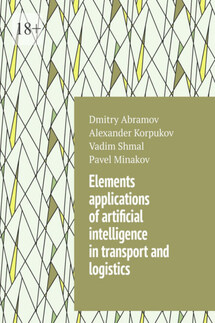Все науки. №11, 2023. Международный научный журнал - страница 2
This concept finds its origin in quantum physics, according to the laws of which, even if a particle does not fall into the physical corpuscular area of the nucleus, it can be captured by it as a result of its low velocity, due to which the de Broglie wave of the directed beam grows (15).
In this case, according to the theory of relativity, (16) is used to calculate the momentum of a directed particle, taking into account the fact that the nuclear effective cross section, as well as all the functions following it, are determined on a time scale after the beam overcomes the Coulomb barrier, from where both the momentum and the velocities are taken directly second, given the factor that due to an increase in the nuclear effective cross-section, for a short time, the nuclear forces together with the Coulomb barrier increase in size.
Where the velocity of the directed particle from the kinetic energy is calculated by deducing through (17).
As a result of the calculations carried out, it was possible to determine the nuclear effective cross-section, which varies in square meters, but a special unit was introduced for it – barn, equal to 10>—28 m>2. But it is worth pointing out some peculiarity in the definition that the value (14) is the reduced nuclear effective cross-section, which for practical value is translated by (19), where the constant (18) is used, which is a dimensionless quantity, which is expressed through the ratio of the practical experimentally determined value of the nuclear effective cross-section of the most commonly used nuclear reaction – the decay reaction uranium equal to 584 barns to the theoretical basis, equal to 3 396 747 21529 barns.
Further, when this value is determined, it is necessary in order to determine which part of all directed particles will actually pass through a nuclear reaction and be able to give a result, the following algorithm is used for this. Let N (x) particles hit the target, and after overcoming the target, the number of particles is N (x) -dN, from where dN is the number of all interactions that occurred in the target. Now, let’s determine that the coordinate at the beginning of the target is x, and at the moment of exit is x+dx, hence dx is the thickness of the target. Then the definition of the concept of the density of the target nuclei is introduced, in order to calculate it, it is necessary to use (20).
This is the number of nuclei present in one cubic meter of the substance used, therefore, based on the definitions and designations introduced, it can be concluded that there are (21) nuclei in the entire target, and if we take into account that the area where the particles enter into interaction, counting as the area of a single case, where it is enough to get one directed particle in order for the reaction to occur, take (14), then for the entire target, these values can be determined according to (22).
Now it is possible to determine the ratio of the entire area, getting to which, it is possible to cause the beginning of the reaction to the entire area of the target, which will be equal to the ratio of the particles that entered the reaction to all particles – functions expressing this value at the initial moment of time, directed initially in the beam (23).
Obtaining such an expression, it is possible to integrate both parts, indicating that the number of particles, as is known, is a function that, according to a certain integral, will take in itself the boundaries from the initial number of directed particles to the number of interactions in the target for the first integral. For the second side, this definite integral has boundaries from zero to the value of the extreme thickness of the target (24—25) [12—18].






